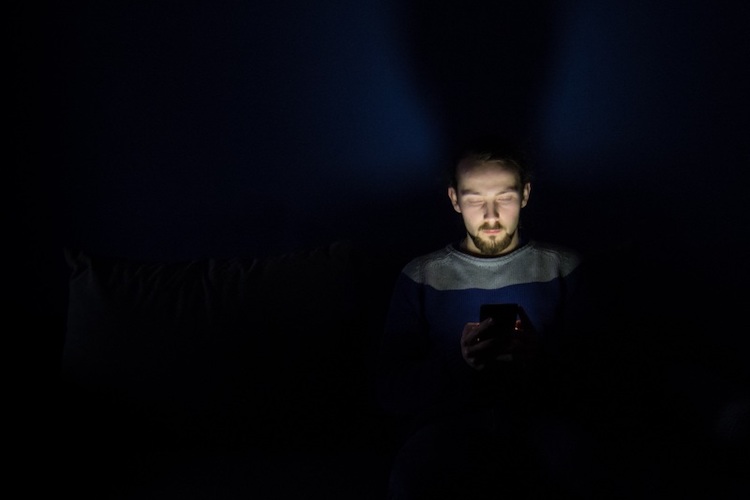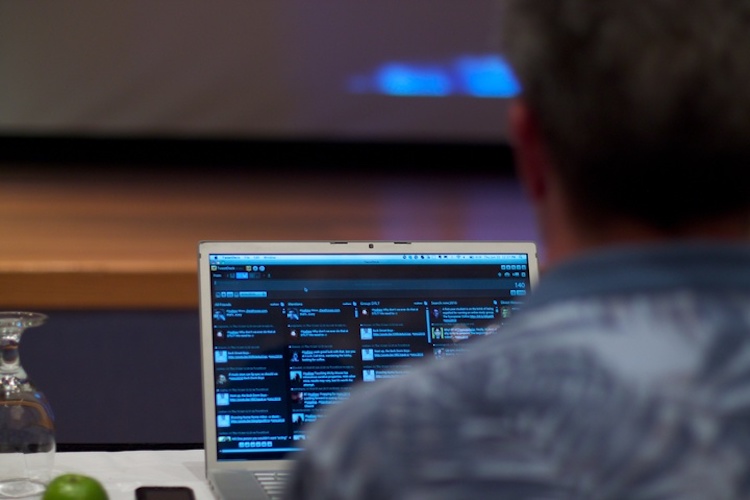11 Ways To Biohack Light To Optimize Your Health
Light is an amazing thing. While, of course, when we think of light, we think of everything from the sun to a common light bulb, the mere existence of light isn’t something that the average person ponders all that often.
Light exists in different wavelengths that we can tell apart by color—most light appears white, blue, or red. Each wavelength has unique effects on the human body, with blue being the most abundant in modern life (think screens, light bulbs, etc.) and—when artificial—the most harmful.
Many studies are showing the negative health consequences of being under artificial lights all day. These include retinal damage, cataracts, hormonal imbalances, disrupted sleep, and even breast cancer.
It makes sense though, doesn’t it? Human beings evolved in a world where sunlight was prevalent during the day and it was dark at night. Our bodies fire up certain functions when our eyes report light, and other functions when it’s dark. In an age where almost all of our indoor lighting is LED and our televisions emit blue light all night long, our bodies are forever confused.
There are ways to hack light in this modern era of fluorescence and smartphone screens. Here are 11 easy ways to bio-hack light to optimize your health…

Don’t Overuse Sunglasses
We forget how great our bodies are at dealing with the natural elements. Your eyes, for example, are able to tell how bright it is outside and then adjust accordingly to reduce harm—all without those fancy sunglasses.
In fact, wearing sunglasses can fool your eyes into thinking the sun isn’t all that bright. When this happens, they don’t instruct your body to create enough melanin (the chemical that makes you tan) which can result in a nastier-than-normal sunburn.
So unless you have the possibility of sand or snow flying into your eyes, ditch the sunglasses and squint yourself to better health.
Choose The Lights In Your Home Carefully
There are a myriad of bio-hacks you can use on the light fixtures in your home to keep you and your family as healthy as possible. As with most health hacking techniques, it’s important to read labels.
One of the best things you can do is replace the lightbulbs in your home with the clear incandescent bulbs from long ago. Make sure you purchase ones that are clear instead of white; they are sometimes called low-voltage halogen lamps. These are much better for your retinal health than the more common LED variety.
When you buy a lightbulb, there is a value on the label called the Color Rendering Index (CRI). This is the measure of how well the bulb reveals colors compared to natural light. Sunlight is the highest rated form of light with a CRI of 100. To find LED lights for your home, you should aim for a full red spectrum CRI of 97 and a temperature of close to 2,700 Kelvin.
You can also invest in what is known as “biological LED” lights. These are specially created to aid your circadian rhythm and come in both night and day versions. You’ll have to designate certain rooms for sleeping and others for waking with this option unless you want to be changing lightbulbs daily.
Or you can take the caveman route and use fire in the form of candles, which also have a perfect CRI of 100.

Avoid Artificial Light
This takes a little getting used to, but is one of the easiest and best ways to cut down on harmful light. All you have to do is avoid turning on the lights in your home until absolutely necessary. Open the windows, pull back the blinds, and flood your house with natural light. You can’t do much about shopping and working, but you can limit your exposure at least while home.
Use DriftBox For Your TV
DriftBox is a cute little device you plug into your TV that allows you to control the amount of blue light emitted. You can even program it to change throughout the day, limiting exposure mostly at night to achieve better sleep. There are other companies that make similar boxes and most run about $100.

Use Blue Light Blocking Glasses
We are surrounded by blue light these days. Between our computer screens, televisions, and phones, it’s impossible to live in modern society without being exposed. However, you can bio-hack the situation with a pair of blue light-blocking glasses. There are a few good companies that produce these, but the main thing to look for is that the glasses block light on the 400-485nm spectrum, as this is the most harmful wavelength. Some brands are even pretty stylish.
Use Photobiomodulation Daily
Photobiomodulation is a fancy bio-hacking term for a type of therapy that purposely uses light to help the body. Red light is known for relieving inflammation and balancing blood sugar while blue light can be good for relieving joint pain despite its other less beneficial effects.
There are a few different ways to administer this therapy, but one of the better ones comes in the form of a wall panel covered in lights that you can adjust to whichever wavelength you need. You simply stand, lie down or just sit in front of the panel, and your eyes and skin do the rest. These should only be used for about 20 minutes each day. You can also try an infrared sauna, which offers similar benefits to red light therapy.

Use Light-Blocking Tape Or Stickers
Even if you use blue light-blocking glasses and have changed all the light bulbs in your home, there are still lots of devices that emit blue light. You can use a mask to block your eyes when you sleep, but your skin is also sensitive to light. There are photoreceptors, similar to those in the eye, all over your body. They help you know what time of day it is as well as regulate your temperature, hormone levels, mood, and appetite. If these photoreceptors spend all night bathed in blue light, it confuses your body and can cause problems.
You can stick special light-blocking tape on any sources of light you can’t replace—power strips, bedroom fans, and any light you may be exposed to when you’re sleeping in hotels or your mother-in-law’s house.
Light Dims makes a reputable light-blocking tape that doesn’t leave sticky residue and comes in a variety of shapes for any light source.

Go Outside In The Morning
Human beings were awakened by the sun for millions of years. Our brains and bodies are programed that sunlight means waking time and lack of it means sleep. It is vital for you to get as much sunlight as possible first thing in the morning. The rays of the sun aren’t as intense at this time but still aid you with vitamin D production and even help your brain make more melatonin when it’s time for bed. Even just a 20-minute walk in the sunshine in the morning can lessen some of the inevitable damage from sitting under artificial lights.
Use An Anti-Glare Computer Monitor
There are a variety of these on the market and they all claim to reduce the brightness and flicker that LED and LCD monitors give off. Most are also glare-reducing, which makes it easier for your eyes to focus on the screen, causing less strain. Eizo makes great computer monitors that even go into “paper mode,” which produces red light and minimizes blue as much as possible.

Install IrisTech On All Monitors
IrisTech is a blue light-reducing eye protection software that makes adjustments to your computer screen to optimize your health. The software automatically adjusts the screen temperature, brightness, and monitor flicker to reduce harmful blue light wherever you are. It can even adjust it based on where the sun is around you and is free to download.
Use Red Light In The Evening
Blue light causes your brain to hinder production of melatonin, the sleep hormone. So before bed, avoid watching TV or scrolling through your phone and use only red light bulbs in the bedroom. Candles are also a healthy form of light, but be sure they’re natural and not full of artificial chemicals. This small change will help your brain produce enough melatonin for you to get all the benefits of a good night’s sleep.
Experts agree that artificial light isn’t good for you. Though it may seem trivial, avoiding as much blue light exposure as possible can enhance your vision and keep you healthier longer. Start with learning to turn on fewer lights in the daytime, relying on only natural light to see. You’ll probably find it easier on your eyes—and your electricity bill.
